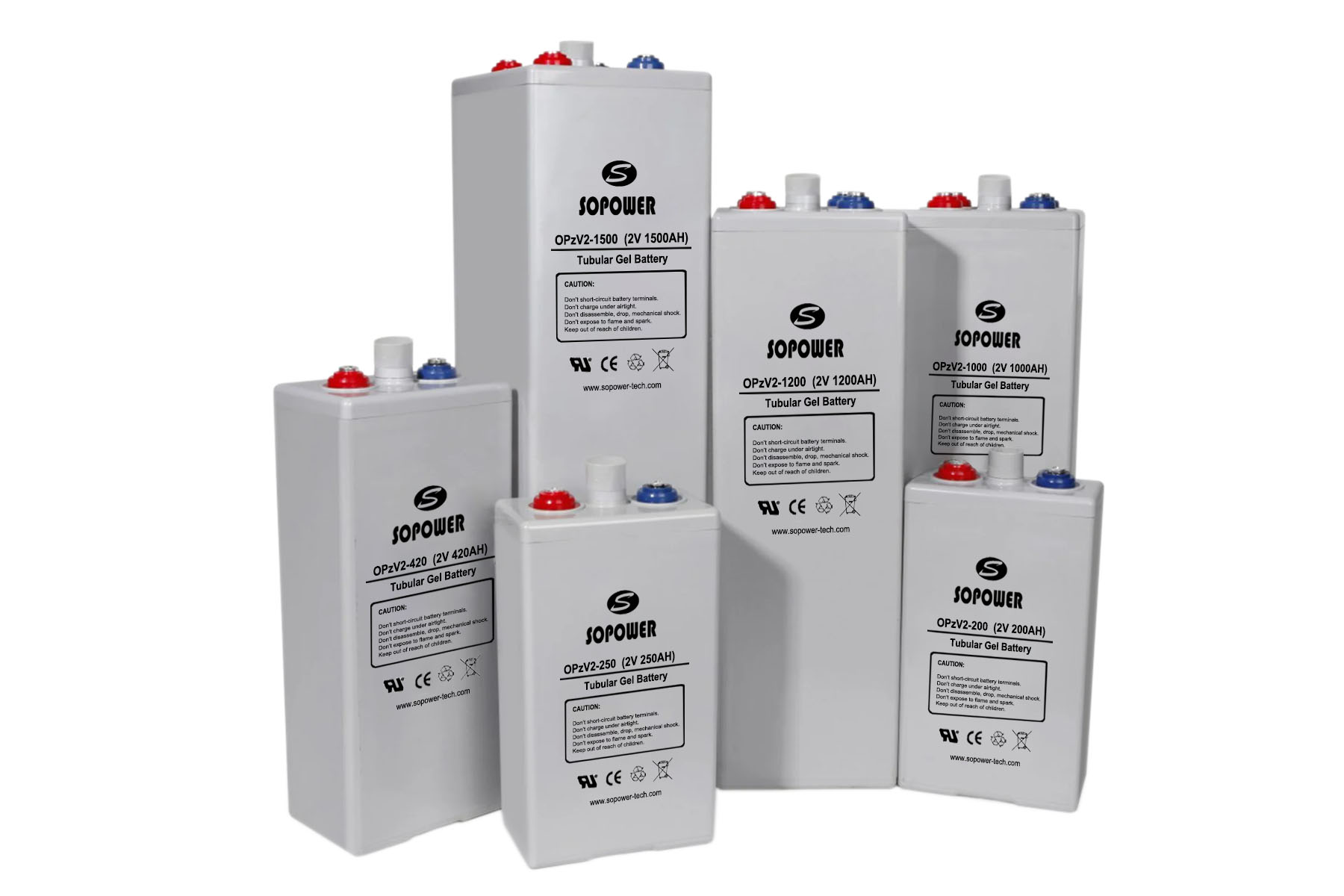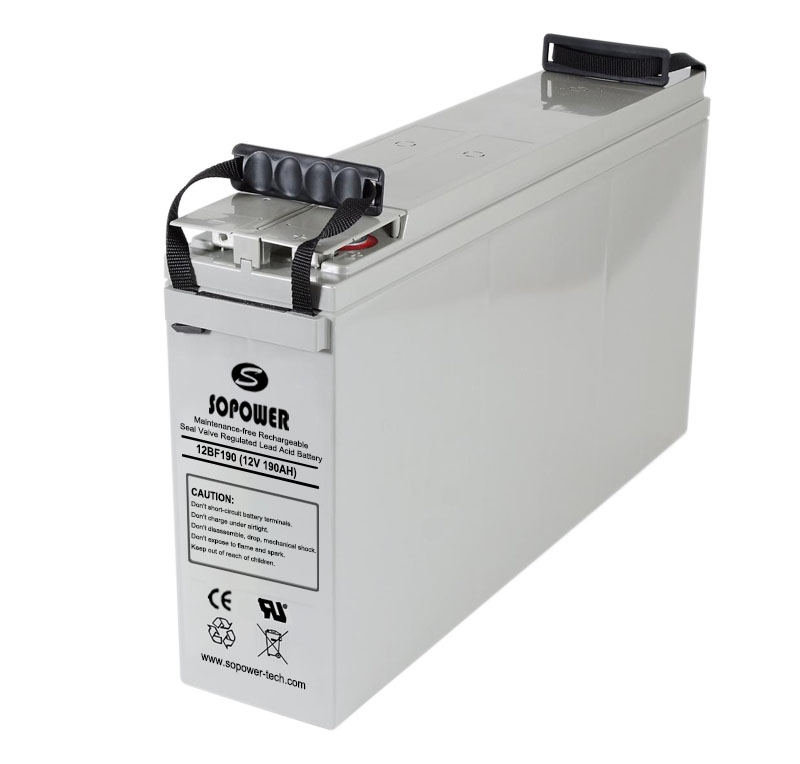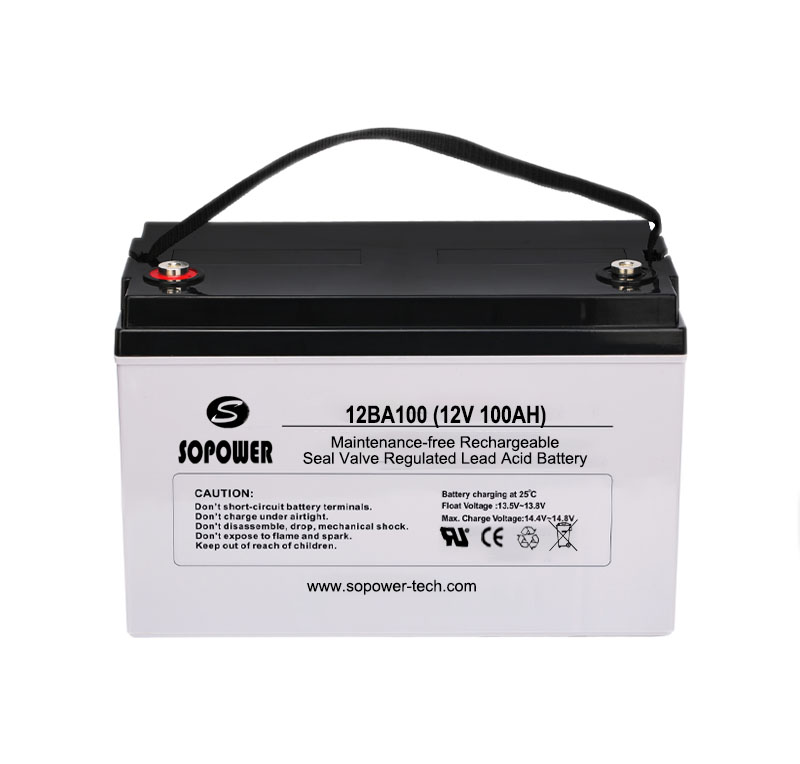Source: PV-Magazine Date: 01. DECEMBER 2015
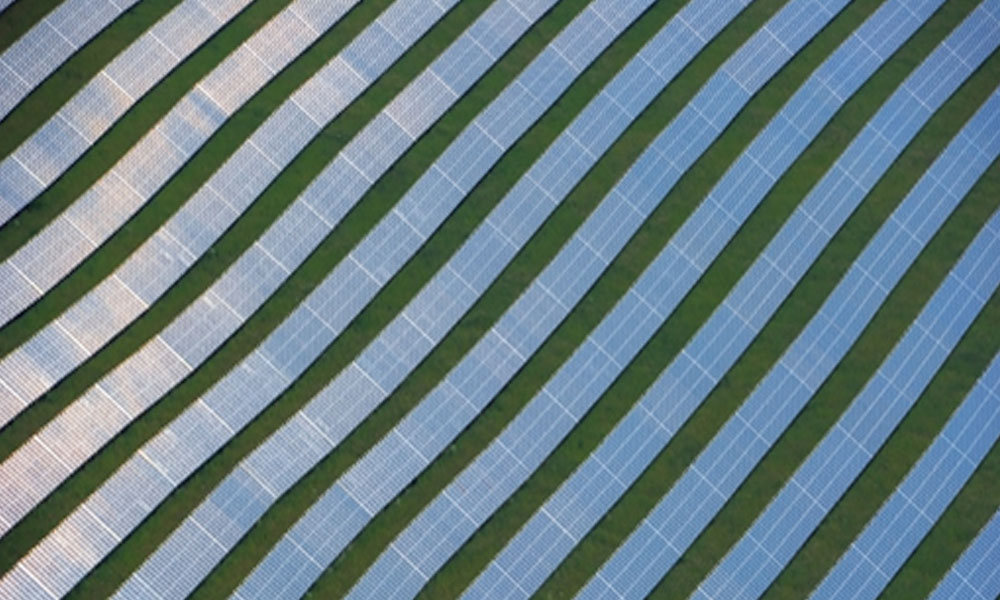
New solar and wind capacity additions between 2015 and 2020 will add more power globally than U.S. shale-oil production did during 2010-2015, according to a new report by Goldman Sachs.
A new equity research report published this week by U.S. investment bank Goldman Sachs examines the low carbon economy and forecasts solar PV and onshore wind will add more to the global energy supply over the next five years than U.S. shale managed over the previous five.
The report, titled The Low Carbon Economy and produced by Goldman Sachs environmental division GS Sustain, expects a wider transition towards greener and cleaner technologies over the next decade, including LEDs accounting for six out of ten lightbulbs; electric and hybrid vehicles to number 25 million worldwide by 2025 (a ten-fold increase on today’s number), and a reduction of >5 gigatonnes (Gt) of C02 per year by that date.
However, it is the field of renewable energy that is poised to have the greatest positive impact on our climate, the report finds. Analysts Brian Lee and Jaakko Kooroshy, who worked on the report, believe that solar PV and onshore wind power combined will add the equivalent energy of 6.2 million barrels of oil a day to the world’s energy supply, outstripping the 5.7 million barrels a day of U.S. shale oil produced from the nation’s wells since 2010.
"Wind and solar are on track to exceed 100 GW in new installations for the first time," they wrote, delivering more than 1 Gt of carbon emission savings annually and comprising two of the 'big four' low carbon technologies that Goldman Sachs believe will drive this lower emissions transition.
"We identify LEDs, solar PV, onshore wind and electric and hybrid vehicles as clear front-runners in the emerging low-carbon economy."
Number crunching
The report uses a combination of graphs, charts and ‘headline numbers’ to shine a spotlight on how the world is already shuffling along a clean energy path. In 2015, for example, Goldman Sachs states how the four biggest U.S. coal companies lost 90% market capitalization as prices fell and clean energy became an attractive alternative.
Between 2009 and 2014, more than $1 trillion was invested in solar and wind capacity globally, corresponding to a decrease in costs that is set to accelerate further over the next decade. This year, the world is expected to add more than 100 GW of new solar PV and wind capacity (combined) for the first time ever.
Although cheaper than ever, the clean energy transition is being aided significantly by public pressure to find ways to reduce carbon emissions, the report adds, with the recent VW scandal and the COP21 UN Climate Change conference bringing the issue of sustainability to the forefront of many people’s minds.
The COP21 summit is calling on nations to identify carbon reduction targets for 2030 and out to 2050, but GS Sustain’s report suggests that the greatest market dislocation will occur over the next decade as China, India and the U.S. make wholesale changes to their energy supply.
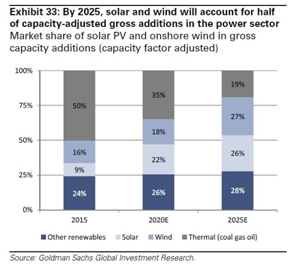
By 2020, for example, China will add a further 63 GW of coal and gas power capacity, but during the same timeframe will increase its solar and wind footprint by 193 GW. India is hoping to add 100 GW of solar PV capacity alone by 2022, while the U.S. will continues to see its solar industry grow beyond 2016, although the pace of growth is very much determined by the level of support offered by the ITC.
Globally, solar PV is set to enjoy 8% CAGR, the report adds, and will overtake wind installations annually by 2018 for the first time. Similar shifts in technology preference will shape lighting and transport over the next decade too, with LEDs accounting for 69% of all light bulbs sold by 2020, and e-vehicles increasing their market share tenfold.
The report cites a "winning mix of policy, scale and technical and cost advances" as the chief contributory factor for such growth, detailing how this "virtuous circle" will propel the chosen four technologies into the hot seat, "even if these technologies are not necessarily the cheapest of fastest near-term solutions to reduction emissions."
An additional lynchpin to this transition is the evolution of battery technology, add the GS Sustain authors, who note in particular the strides made by lithium-ion-based batteries in terms of performance, reliability and cost. "Large-scale investment is expected to bring further significant cost reductions and performance improvements for li-ion batteries," the report adds. This will prove critical in underpinning the growth of both solar PV and the breakthrough of grid-connected electric and hybrid vehicles, sales of which will grow from around $12 billion this year to $244 billion by 2025.
All told, GS Sustain’s projections suggest that low carbon technologies will help bring forward a global peak in carbon emissions – currently widely accepted to occur around 2025 – to 2020, after which point C02 levels will begin to fall, thus aiding nations’ own carbon reduction goals for 2030.
Predictions for Paris
the GS Sustain report also turns its attentions briefly to the potential impact of the COP21 conference, and suggests that the negotiations will "not produce a global rulebook" on how to achieve lower emissions, but rather will prove an ideal platform for advanced nations, emerging economies and clean technologies themselves to show how the path towards a cleaner future is already signposted.
"We expect governments to continue to revise solar and wind targets upwards," the report says. "This creates upside particularly in emerging markets, where renewables are seen as an increasingly attractive option to meet growing energy demand."
There will be some tension, however, as renewables begin feeding a greater proportion of world grids. As seen recently in the U.K. and earlier in Spain and Germany, frequent policy shifts are expected in new solar markets as politicians grapple with the new realities and "try to navigate tensions" caused by attempts by government to have renewables shoulder greater responsibility in grid maintenance and back-up capacity.
"On aggregrate, we expect policy-makers to continue to reduce subsidy rates for wind and solar power, as generous subsidies in combination with high deployment rates create considerable fiscal burdens and cost reductions mean that less subsidy is needed to incentivize deployment," the report adds.

